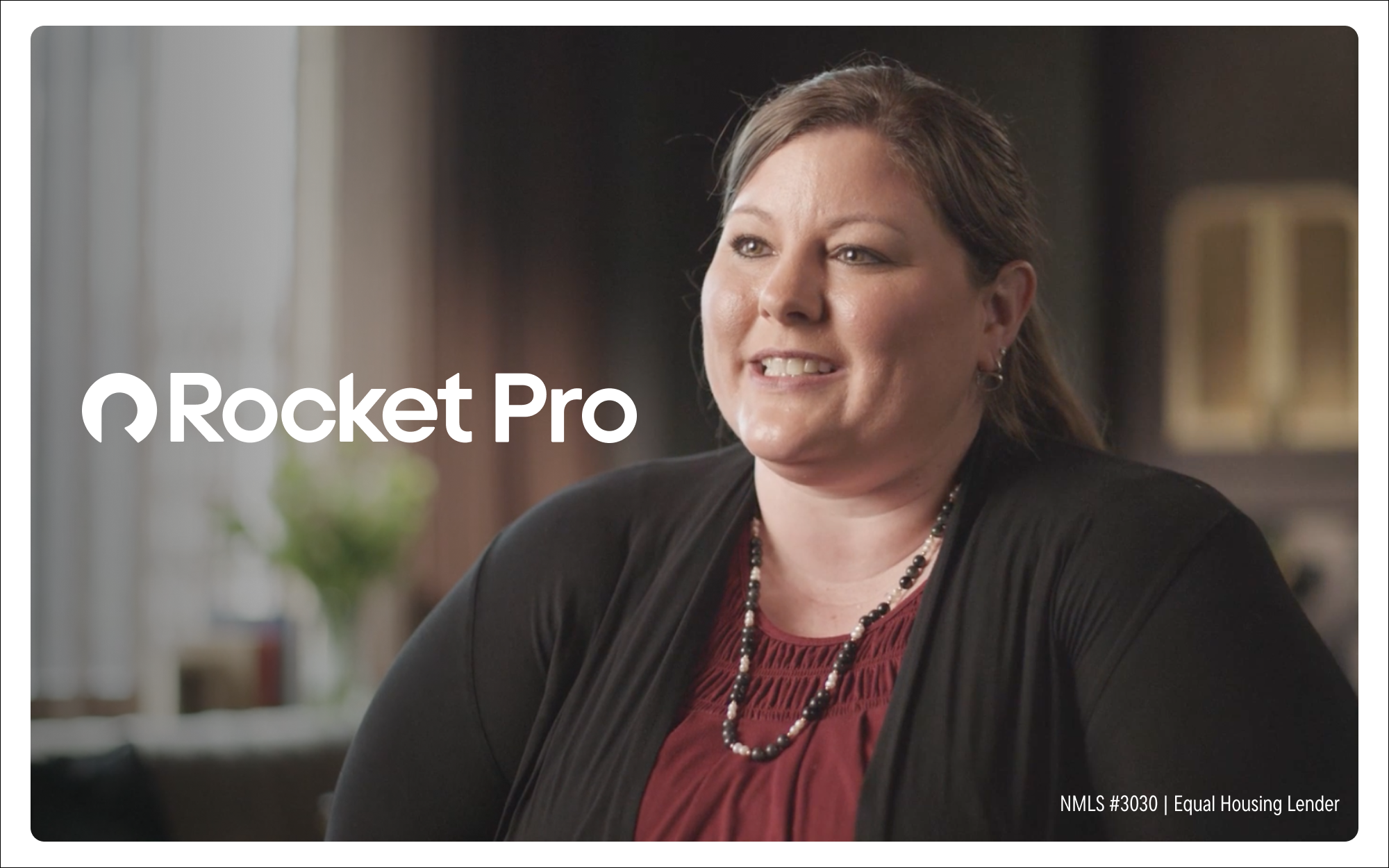Even with the disruption of the pandemic, 2020 was a huge year for mortgage lending, with many community banks seeing record numbers of home loans, refinancings and more. The question is whether that momentum will continue.
Will 2021 be another banner year for mortgage lending?
June 01, 2021 / By Beth Mattson-Teig
Even with the disruption of the pandemic, 2020 was a huge year for mortgage lending, with many community banks seeing record numbers of home loans, refinancings and more. The question is whether that momentum will continue.
The mortgage industry is coming off a record year of origination activity. It may be tough for some community banks to beat what was an unexpectedly good year for mortgage lending, but many still anticipate robust demand for home loan products through 2021.
Real estate ups and downs
⬇︎27%
Refinancing activity 2020–211
⬆︎13%
New-home mortgages 2020–211
⬆︎16%
Vacation home sales (2020)2
⬆︎19%
New single-family home sales (2020)2
⬆︎25%
New single-family home sales (2021 forecast)2
Sources: 1. Fannie Mae 2. National Association of Realtors
“2020 was a banner year for home loan growth,” says Scott Auen, senior vice president of retail lending at $1.3 billion-asset Cornerstone Bank in Spencer, Mass. The community bank saw a 200% increase in its home loan business in 2020, originating more than 1,000 loans with a total volume of about $270 million. Refinancing skyrocketed following a rapid drop of the 30-year fixed loan rate last spring. “Rates have ticked up enough that we’re starting to see a slowdown in refinance volume,” Auen adds.
The purchase market is expected to be strong, but lack of housing inventory will likely affect loan originations in 2021, Auen says. Cornerstone Bank is forecasting that its refinancing volume will be half of what it completed last year. “We do expect originations to be significantly lower than in 2020, but the volume will still be strong compared with historical numbers,” he adds.
According to Fannie Mae, residential mortgage originations surged more than $2 trillion to $4.5 trillion in 2020, and loan refinance deals saw a record high $2.89 trillion. Fannie Mae is forecasting strong, but lower, origination volume for 2021. It anticipates $3.93 trillion combined from new home purchases and refinancing of existing loans, followed by a further drop to $2.94 trillion in 2022.
Despite the decline, that volume would represent a big year by historical standards. Prior to 2020, annual single-family mortgage originations had been less than $2 trillion since 2012, according to Fannie Mae. So, while volumes are coming off extremely high levels, the market will remain very active for the next two years.
“There is a huge pent-up demand for housing, and builders are building like crazy,” says Ron Haynie, ICBA’s senior vice president of mortgage finance policy. Yet, community bankers are keeping a close eye on mortgage rates and housing market trends. Mortgage activity will depend on how rates move in 2021, while housing market trends will influence demand for different types of loan products, he adds.
Higher rates will weigh on refi
Given the high level of refinancing in 2020, it’s no surprise that the wave of refinancing is expected to ebb in 2021. Fannie Mae is predicting that refinancing activity will drop by about 27% year over year to $2.11 billion, while mortgages tied to new home purchases will rise 13% to $1.82 billion.
“We are anticipating a considerable slowdown in refinance originations. On the other hand, our markets have strong economies and are showing a lot of demand for home purchases and construction.”—Harry Hayes, Clear Mountain Bank
Mortgage rates have risen in 2021 along with a brighter economic outlook, including the $1.9 trillion in stimulus available through the American Rescue Plan that President Joe Biden signed into law in March. “It looks like rates in the 2% range are over, but rates will continue to be favorable at or near rates of 3.5% on average,” says Nadia Evangelou, senior economist and director of forecasting at the National Association of Realtors (NAR). The Fed has said that it’s committed to keeping the federal funds rate at 0% to 0.25% through 2023. The fact that core inflation remains relatively low—less than 2%—also is favorable to low mortgage rates, Evangelou adds.
Despite the high volume of refinancing activity that occurred in 2020, there will still be a fair amount of demand in 2021 and 2022. People often choose to refinance to pull equity out of their homes to pay for home improvements, trips or college tuition. In addition, some people who were not in a position to refinance in 2020, perhaps because they lost their job or had reduced income, may be able to do so in 2021.
As refinancings slow, community banks are turning their attention to trends driving new home purchases. Clear Mountain Bank in Morgantown, W.Va., originated more than $270 million in 2020, more than twice its record in 2019.
“With rates expected to increase this year, we are anticipating a considerable slowdown in refinance originations,” says Harry Hayes, vice president, director of mortgage origination at the $800 million-asset community bank. “On the other hand, our markets have strong economies and are showing a lot of demand for home purchases and construction.”
As things start to get back to normal, Hayes says, home construction, renovation and purchase transactions should be stronger in 2021.
“We are also experiencing a need for millennial families to relocate to bigger homes to accommodate their growing families,” he says. “The lack of housing inventory and the rising cost of construction could result in some of that demand not being met, but we do expect purchase and construction origination to be really strong throughout 2021.”
Given its expectation that construction and mortgage lending will be strong, Clear Mountain Bank has added more jumbo loan options and improved its construction and home equity products.
Attention shifts to home purchases
The brisk pace of home sales is one of the positive trends continuing to drive demand for home loans in 2021. Existing-home sales increased 5.6% in 2020 to total 5.64 million, the highest level since 2006, according to NAR. In particular, new single-family home sales jumped 20% in 2020 to more than 800,000. As of March, NAR was forecasting a further 15% increase in home purchases in 2021, with growth of 25% in new single-family home sales.
That housing boom is being fueled by a variety of factors, including low mortgage rates and the pandemic, which has led some to seek larger homes with more outside space. Second home purchases also have performed better, especially in vacation destinations and retirement communities. According to NAR, vacation home purchases increased 16% in 2020.
Millennials are another driving force, transitioning from rentals to homes as they start or grow their families, Evangelou says. In 2020, this generation accounted for the largest share of homebuyers, at 37%. Now, Gen Z buyers are starting to move into the homebuying market, according to NAR.
Pittsburgh-based First National Bank (FNB) has a positive outlook. Its mortgage banking division achieved record production levels last year; it made more than $3 billion in loans compared with $2.6 billion in 2019.
“FNB expects 2021 will be another strong year for home loan financing, as many homebuyers are still interested in purchasing, building new construction, refinancing, or taking out home equity,” says Joseph Cartellone, executive vice president and director of mortgage services at FNB, the largest subsidiary of $38 billion-asset F.N.B. Corp.
FNB saw a surge of new activity in the first quarter of 2021. “High buyer demand is expected to continue throughout the year, although it may decrease slightly as interest rates rise slowly,” Cartellone says. That being said, mortgage rates are expected to remain favorable for prospective homebuyers, whether they are buying, building, upgrading or refinancing an existing home, he adds.
Staying ahead of the competition with digital
Community banks capture about 20% of the single-family mortgage market, and they are working harder to maintain and grow that business in a highly competitive market.
Bankers are continuing to deploy a variety of strategies to maintain steady pipelines of mortgage business, including increasing marketing and outreach, networking with real estate agents and builders, and adding new loan products.
Fully digital mortgages have become a key tactic in this campaign; the pandemic has accelerated consumers’ expectations of a paper-free experience. State laws allowing electronic notarization and e-closings have helped make digital mortgages possible.
“There have been a lot of things that have changed in the last year to make it easier to get things done, and I think that is only going to continue to accelerate now that we have started down this path,” says Ron Haynie, ICBA’s senior vice president of mortgage finance policy.
First National Bank (FNB) in Pittsburgh launched a fully digital home mortgage experience this spring that provides customers with an intuitive and secure borrowing process, according to Joseph Cartellone, FNB’s executive vice president and director of mortgage services.
FNB customers are now able to prequalify, receive preapproval and apply online for a mortgage for an existing home, new construction, renovation or refinancing from their device. They can then upload documents via an online portal, electronically sign their mortgage application and track its status. The enhanced digital experience includes simplified applications that can be self-guided or completed in consultation with a loan officer or bank representative.
Key housing trends to watch
The saying “a high tide lifts all boats” aligns with what community bankers are seeing in mortgage activity so far this year. They report fairly consistent demand across the board, from first-time homebuyers to baby boomers buying second homes in retirement communities. In addition, they expect many of the housing trends that have been prevalent over the past year to continue in the second half of 2021.
“Because of the pandemic, many people have spent significantly more time at home and have been working remotely, changing their perspective about the role of their space and whether it offers exactly what they need,” Cartellone says. “This shifting mindset could lead to decisions to expand, renovate or move.”
Extra time at home also created an opportunity for some to save money on expenses like commuting and entertainment, leaving them with more discretionary income. First-time home buyers may use those incremental savings toward a down payment or closing costs, Cartellone adds, while others are using it to remodel.
Are there enough houses to meet demand?
One concern is that the shortage of for-sale inventory could constrain the market. As of February, NAR was reporting a two-month supply of inventory versus the 3.1-month supply in February 2020. “We have seen some cooling off of activity due to the limited supply,” Evangelou says.
However, that isn’t a new issue. The past decade has seen consistent underbuilding, according to Evangelou. She estimates that the housing market needs 5 million to 6 million new homes to get the housing supply to meet the demand. Despite delays caused by weather, construction finished the year with its highest level since 2006. NAR expects new single-family home construction starts to hit 1.6 million units this year, a 14% increase from 2020.
This construction will create financing demand from both buyers and builders. For example, some homeowners may be reluctant to sell because they fear they might not be able to find their next house, and instead opt to build a new home or expand their current one.
“As such, refinancing and loans for upgrades are expected to be robust in 2021,” Cartellone says, “as will home equity loans and lines of credit.”
Closing the affordability gap
The shortage of for-sale housing inventory is creating a seller’s market that is pushing prices higher and making homeownership less accessible. According to the National Association of Realtors (NAR), all regions of the country are reporting double-digit increases in year-over-year prices. Nationally, the median existing single-family home price rose 15.8% to $313,000.
Banks can offer a variety of mortgage programs either through Freddie Mac and Fannie Mae, or government-backed programs available through the Federal Housing Administration (FHA), U.S. Department of Agriculture (USDA) and Veterans Affairs (VA) loans.
“Frankly, I think we are going to see more of these programs,” says Ron Haynie, ICBA’s senior vice president of mortgage finance policy. “This administration is very focused on housing, especially for minorities and communities of color, and I think you are going to see a lot more resources focused in those areas to help get folks into safe, clean, decent affordable housing.”
Some community banks may be reluctant to offer government home loan products, which can be more complicated and can require a dedicated underwriter.
“Where banks can still participate in that market is through their local or state housing finance agency, because a lot of times the agency will have that expertise,” Haynie says. In this scenario, the community bank acts more as a loan broker.
Many community banks offer proprietary home loan products as part of their Community Reinvestment Act (CRA) commitments. For example, Cornerstone Bank in Spencer, Mass., has created a home loan product for first-time homebuyers with low to moderate incomes. The product allows applicants to secure a loan with as little as 3% down, and the bank pays the mortgage insurance.
“There is always a need for first-time homebuyer products, because sometimes they struggle with the down payment,” says Scott Auen, senior vice president of retail lending. “So, we make sure that we have a broad array of products to offer all of our customers.”
Subscribe now
Sign up for the Independent Banker newsletter to receive twice-monthly emails about new issues and must-read content you might have missed.
Sponsored Content
Featured Webinars
Join ICBA Community
Interested in discussing this and other topics? Network with and learn from your peers with the app designed for community bankers.
Subscribe Today
Sign up for Independent Banker eNews to receive twice-monthly emails that alert you when a new issue drops and highlight must-read content you might have missed.
News Watch Today

Join the Conversation with ICBA Community
ICBA Community is an online platform led by community bankers to foster connections, collaborations, and discussions on industry news, best practices, and regulations, while promoting networking, mentorship, and member feedback to guide future initiatives.













